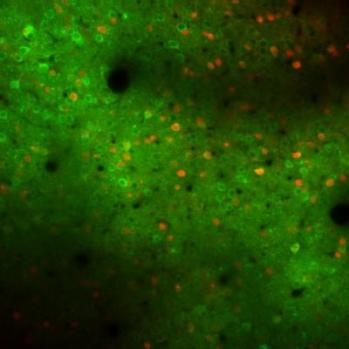Skilled motor movements of the sort tennis players employ while serving a tennis ball or pianists use in playing a concerto, require precise interactions between the motor cortex and the rest of the brain. Neuroscientists had long assumed that the motor cortex functioned something like a piano keyboard.
"Every time you wanted to hear a specific note, there was a specific key to press," says Andrew Peters, a neurobiologist at UC San Diego's Center for Neural Circuits and Behavior. "In other words, every specific movement of a muscle required the activation of specific cells in the motor cortex because the main job of the motor cortex was thought to be to listen to the rest of the cortex and press the keys it's directed to press."
But in a study published in the advance online publication of the journal Nature, Peters, the first author of the paper, and his colleagues found that the motor cortex itself plays an active role in learning new motor movements. In a series of experiments using mice, the researchers showed in detail how those movements are learned over time.

Cells in the motor cortex of mice display regions in which the neurons are active (in green) and regions in which neuron firing is inhibited (in red).
Credit: UC San Diego
With Simon Chen, another UC San Diego neurobiologist, the researchers monitored the activity of neurons in the motor cortex over a period of two weeks while mice learned to press a lever in a specific way with their front limbs to receive a reward.
"What we saw was that during learning, different patterns of activity - which cells are active, when they're active - were evident in the motor cortex," says Peters. "This ends up translating to different patterns of activity even for similar movements. Once the animal has learned the movement, similar movements are then accompanied by consistent activity. This consistent activity moreover is totally new to the animal: it wasn't used early in learning even with movements that were similar to the later movement."
"Early on," Peters says, "the animals will occasionally make movements that look like the expert movements they make after learning. The patterns of brain activity that accompany those similar early and late movements are actually completely different though. Over the course of learning, the animal generates a whole new set of activity in the motor cortex to make that movement. In the piano keyboard analogy, that's like using one key to make a note early on, but a different key to make the same note later."





Tennis Player